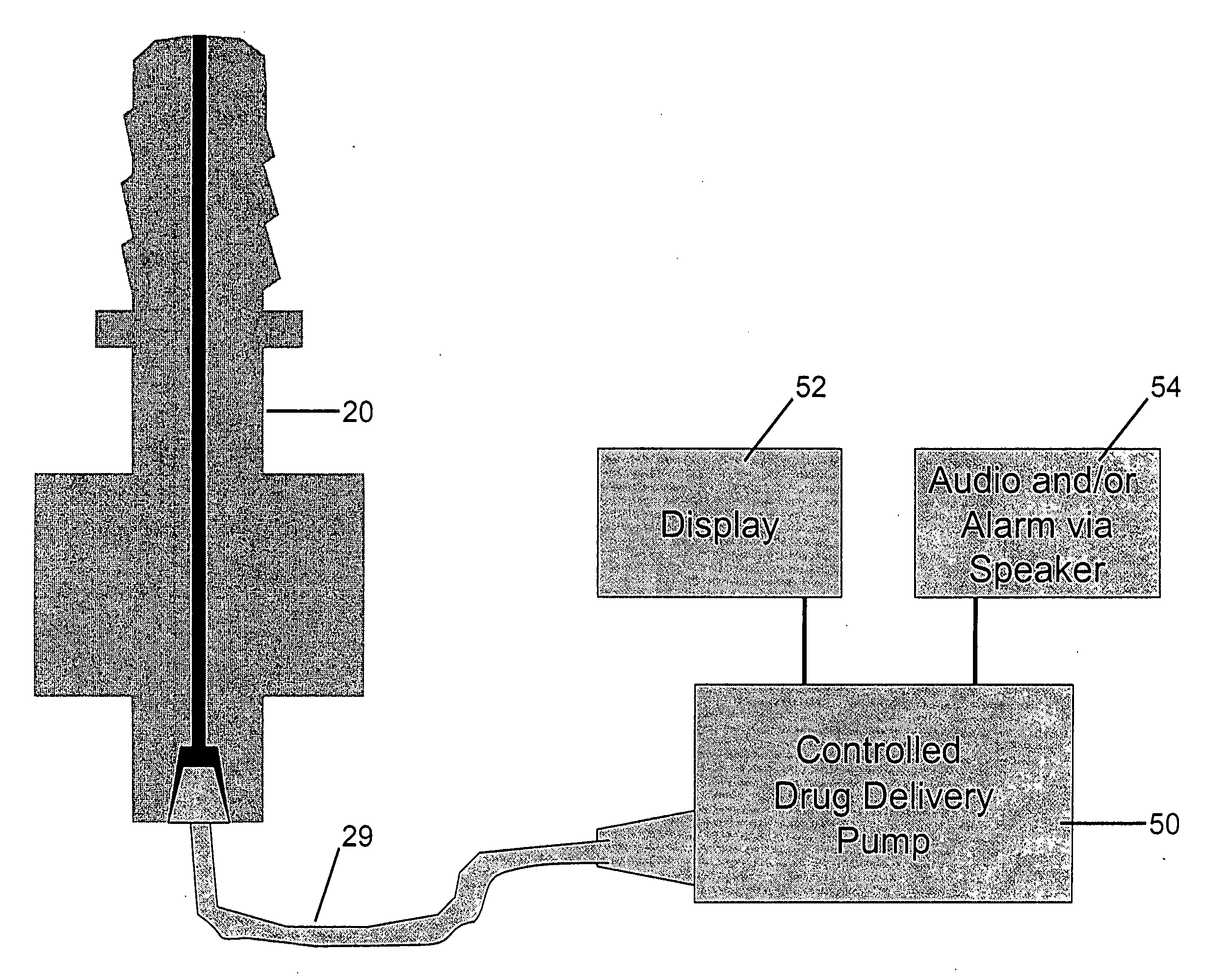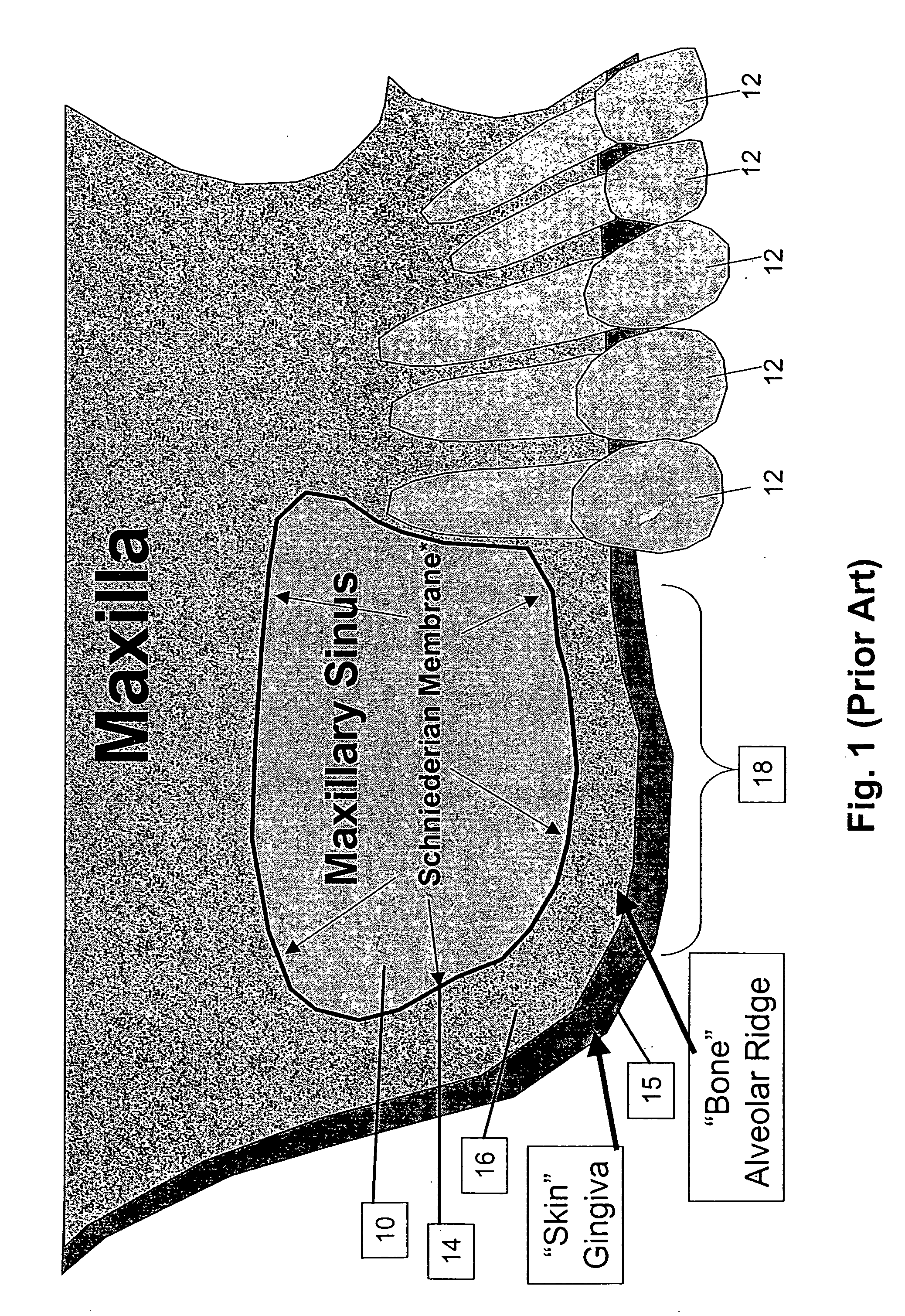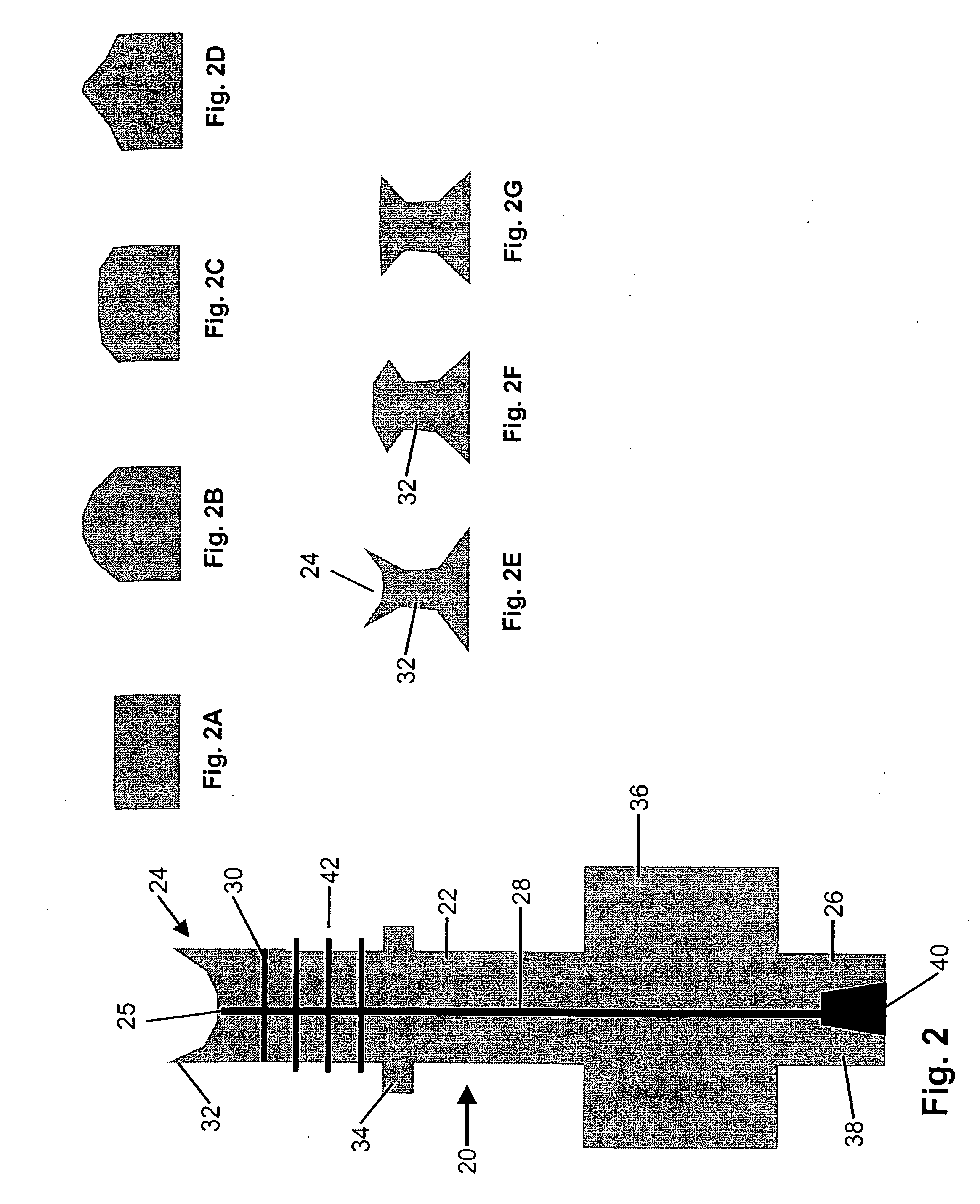Method and apparatus for performing maxillary sinus elevation
a maxillary sinus and elevation technology, applied in the field of osseous regeneration of the maxillary sinus, can solve the problems of limited dental implants placement in the anterior lower jaw, inferior dental bridge alternatives in comparison to dental implants, and considerable challenges in the replacement of the maxillary posterior teeth
- Summary
- Abstract
- Description
- Claims
- Application Information
AI Technical Summary
Benefits of technology
Problems solved by technology
Method used
Image
Examples
Embodiment Construction
[0041]FIG. 1 shows a typical cross section of the maxillary sinus 10. Several teeth 12 are seen in the Figure in a normal configuration. The maxillary sinus 10 is separated from the mouth by the alveolar ridge 16 formed of bone. The bone is covered on top by the subantral membrane 14 and on the bottom by the gingiva 15. As shown in the Figure, because this person has lost several molars, the floor of the maxillary sinus has been depressed or lowered in the area 18. As a result, the alveolar ridge 16 in this region has lost considerable bone mass and quality. Frequently, the bone in this area is porous and is not strong enough to support an implant of sufficient length and an associated final dental prosthesis. Typically, in a health person the ridge 16 in this area may be about 8 to 14 mm however, in persons who have lost their molars, the thickness of the ridge 16 may be no more than about 4 mm.
[0042]FIG. 2 shows a first embodiment of a sleeve 20 constructed in accordance with thi...
PUM
 Login to View More
Login to View More Abstract
Description
Claims
Application Information
 Login to View More
Login to View More - R&D
- Intellectual Property
- Life Sciences
- Materials
- Tech Scout
- Unparalleled Data Quality
- Higher Quality Content
- 60% Fewer Hallucinations
Browse by: Latest US Patents, China's latest patents, Technical Efficacy Thesaurus, Application Domain, Technology Topic, Popular Technical Reports.
© 2025 PatSnap. All rights reserved.Legal|Privacy policy|Modern Slavery Act Transparency Statement|Sitemap|About US| Contact US: help@patsnap.com



